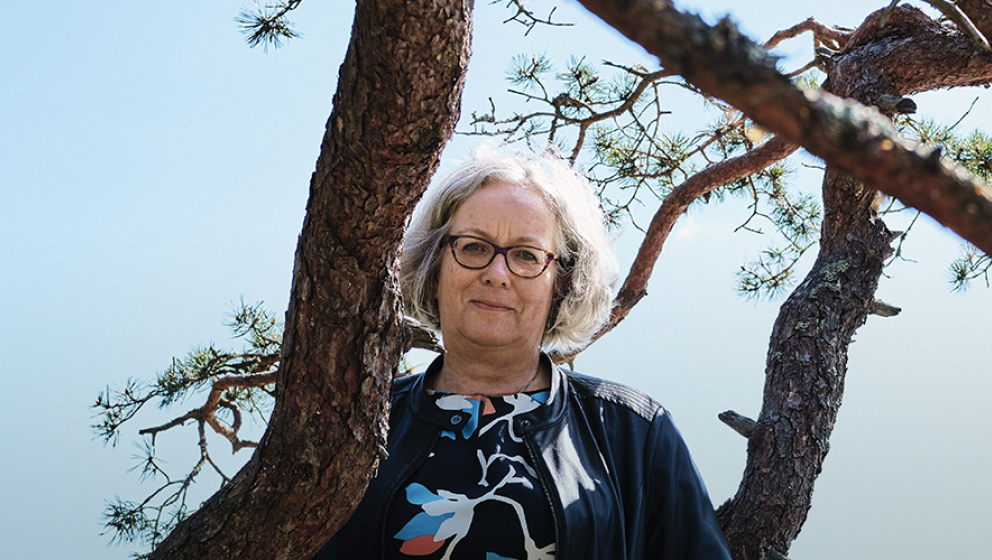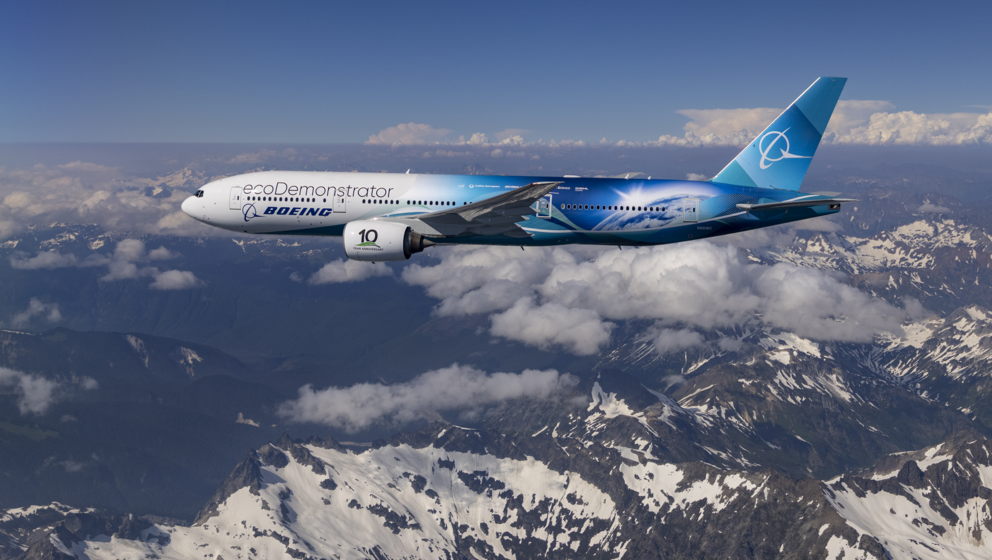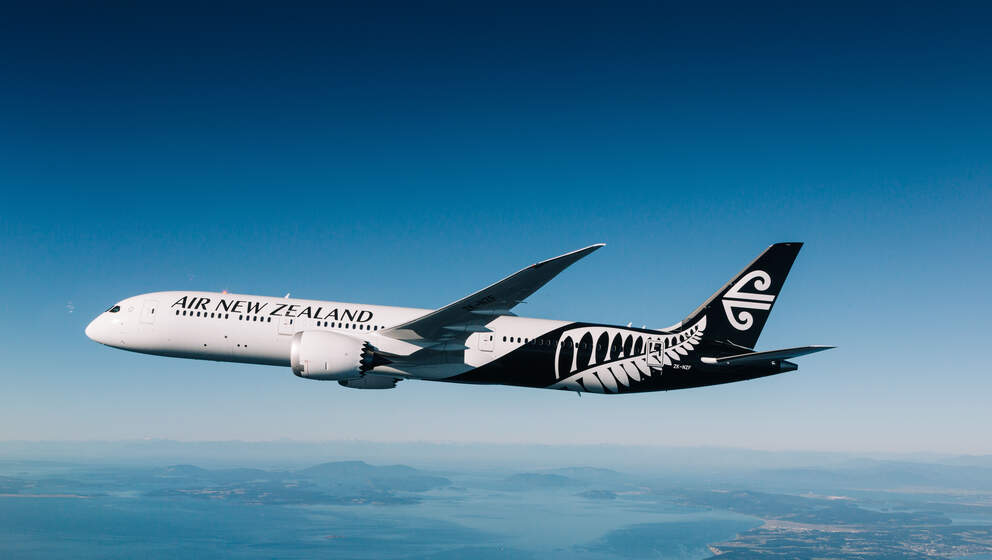Urban life, reimagined: How to build the clean, sustainable city of the future
The battle for the planet is won or lost in cities. But why has humankind so far failed to build clean, healthy cities? And could we now succeed with the help of new ideals or technology – or by simply starting over from scratch? We explore the world’s most liveable and unviable urban environments to discover the building blocks of sustainable future cities.
Expect to learn:
What the most advanced cities are doing right now to reduce carbon emissions and air pollution
What separates the world’s most liveable cities from the worst ones
Where the ideals come from that dictate city development
Why experts criticize the smart city movement
What citizens, businesses and officials can do now to build clean future cities
Imagine the prototypical city of 2120. What do you see? Do you picture pilotless drones flitting between gleaming skyscrapers, transporting a connected population around a perfect technological “smart city”, where ubiquitous sensors, data harvesting and the internet of things means the city almost runs itself behind the scenes – everything from garbage collection to your safety and security?
Maybe you picture a city on a more human scale: not a car in sight; everyone walking, cycling or scooting, with pocket parks and neighborhood play spaces; the buildings constructed from recycled material, urban farms providing sustenance, power from solar and wind, while extensive wetlands or porous street surfaces guard against the threat of flooding.
Perhaps your vision is more dystopian: a world where accelerating climate change and the urban heat island effect mean ever more cities experience summer highs over 50°C and the installation of air conditioning is considered essential in cities across much of the globe. Maybe the gated communities of today have been taken to the next level, with only the rich able to pay for filtered clean air, while a robot workforce has made many millions permanently unemployed – a future of extreme inequality and violent social unrest.
The future is shaped by decisions that we make now
Whichever vision you share the one certain thing is that your crystal ball-gazing will be inaccurate.
Look at the futuristic visions of 2020 made a century ago to see how bad we are at forecasting our future: none of us are living in cities enclosed under vast steel and glass shells, while taking steam-powered moving walkways in the sky to get to work. But, no matter how wide of the mark our predictions are, the future is shaped by decisions that we make now.
We haven’t got much time. The world’s leading scientists at the UN Intergovernmental Panel on Climate Change (IPCC) have warned we only have another decade to limit global warming to 1.5°C above pre-industrial levels, beyond which another 0.5°C will significantly worsen the impact of droughts, floods, extreme heat and poverty for hundreds of millions of people.
Cities must act now to address the climate emergency
Brent Toderian, the former Chief City Planner of Vancouver and the founder of the award-winning urban consultancy TODERIAN UrbanWORKS, says cities must act now to address the climate emergency. “We had time, and if we had acted in a more urgent way we could have moved more gradually. Frankly, cities went too slowly, or took no action, and some even went the wrong way. Whatever time we had we’ve squandered. There are really no credible excuses left.”
There is still hope, though, if we can start to reduce emissions quickly. And that hope is found in ambitious cities, companies and individuals.
Cities are the problem… and our only hope
“The battle for the planet will be won or lost in cities,” stated a recent report from the Coalition for Urban Transitions. That is inarguably true:
Already, cities are responsible for 75 percent of GDP and global carbon emissions, with most of that coming from transport and buildings. Furthermore, the urban population is expected to double by 2050, with the OECD forecasting that 85 percent of a global population will be urban-dwellers in a century – that’s 9 billion people living in cities. Already, more than 80 percent of people living in urban areas are exposed to air quality levels below WHO standards, with air pollution killing an estimated 4.2 million people prematurely worldwide every year.
All that said, cities are not the problem. They are, in fact, the solution to the very issues they were a part of creating.
A city is the most sustainable way of organizing human life that we know; it’s only the efficiency of compact cities that offers the chance to dramatically reduce carbon emissions while maintaining high standards of living. Comparing the vibrant seaside city of Barcelona and America’s “city in a forest”, Atlanta, provides a telling example of the benefits of living closely:
Both Barcelona and Atlanta are home to just over 5 million people, but Spain’s second city produces just a 10th of Atlanta’s carbon emissions. How is that possible?
Living in a city actually makes individuals more innovative
With no mountains or coastline to limit the city during the post-war boom, Atlanta just kept on growing, and now ranks as the most sprawling large metropolitan area in the country. Barcelona, by contrast, takes up just four percent of the area of its southern US counterpart, resulting in far less emissions from transport and buildings.
But the benefits of living densely lie even deeper. The researchers at M.I.T. have found that living in a city actually makes individuals more innovative. Scientists noticed that as city populations grow, so does overall and per-capita productivity, as people are more exposed to opportunities and stimulating ideas.
Many believe it’s exactly this kind of efficient inventiveness, leading to technological innovation, that will finally lead us to healthy, clean cities. But is the tech-driven smart city movement truly as full of potential as we’ve grown to believe?
“Smart” visions of the future
Search for “city of the future” on the internet and what you get back will be dominated by glossy images of what we call smart cities. It is a hi-tech world packed with shiny skyscrapers where digital connectivity is key: everyone is plugged in, cars are driverless and connected, huge amounts of data are harvested from myriad sensors in everything from your fridge, to the road, to the waste bin you pass in the street and then processed by powerful AI algorithms which manage the city and its citizens to maximize efficiency and control.
Not all believe this vision is a viable – or even welcome – future.
“It is as if they see the city as optimized machines for living,” says Philippe Crist, an advisor on Innovation and Foresight for the International Transport Forum (ITF) at the OECD.
“And that is not what cities are about. Cities are for humans and they exist so people can come into contact with each other – for economic, for social, for cultural reasons.”
Many smart city visions don’t portray old people, free play or random social mixing
According to Crist, the idea of the smart city pervades our discourse about the city of the future, and it is based on the notion that if only we could reach peak efficiency, with seamless connectivity, we could achieve our full potential for our cities, and as humans. “But many of these visions don’t portray old people, or free play, random social mixing, unsupervised children, or people going out to get things. They ignore real people and the random mixing of ideas, unplanned activities, serendipitous meetings and all the other ‘gaps’ that make the city.”
And even if they did work for the wealthy and connected, what about the poor and underprivileged, what about people who cannot or do not want to plug in? “You have to ask whether the current developments in urban thought are moving us towards the city of the future we want,” Crist argues.
Smart city visions are lapped up by mayors and city leaders all over the world, keen to associate themselves with glossy hi-tech futures. The temptation is particularly prevalent in Asia and Africa – the parts of the world where 90 percent of the growth in urban populations in the next century is predicted to happen, according to the latest UN World Urbanisation Prospects data.
Pressured city planners in high-growth areas also have another utopian-sounding scheme in mind: building cities completely from scratch.
New cities fever
In 100 years, when we hear the word metropole, it won’t be New York or Mexico City that pops into our minds, but rather Lagos in Nigeria, Kinshana in the Democratic Republic of Congo and Dar Es Salaam in Tanzania – the three cities Daniel Hoornweg at the University of Ontario Institute forecasts to be the largest in the world by the end of the century.
120 shiny new cities have been built from scratch since the early 2000s
As politicians and officials in Asia and Africa search for a solution to the pollution, congestion, overcrowding and lack of space that plague many of their existing cities, starting cities from scratch with a completely blank slate is a powerful pull. The phenomenon is what Sarah Moser, Professor in Geography and Urban studies and Head of the New Cities Lab at McGill University, calls “new cities fever.” She has counted 120 of these shiny new cities rising from deserts, plains and reclaimed land around the world since the early 2000s. Moser is also the writer of the forthcoming book The Atlas of New Cities.
Not that there’s anything new in new city fever: People have been building new cities on virgin territory for centuries – after all, Canberra, Astana and Washington DC are all purpose-built capitals. But the current scale of construction is unprecedented and, crucially, the guiding vision has changed – and perhaps not for the better.
The new cities of the 1950s and 60s, such as Chandigarh in India (planned by modernist pioneer Le Corbusier) and Brasília in Brazil (by Corbu’s apprentices Lúcio Costa and Oscar Niemeyer), were government-led and were intended to be socially and economically inclusive. In contrast, today’s new cities are mostly funded by private backers and are more likely to exacerbate socio-economic divisions, says Professor Sarah Moser. “They are constructed exclusively for the rich because it is much more profitable to create luxury housing than affordable family housing,” she says.
Philippe Crist of the International Transport Forum highlights the case of Masdar City, rising out of the desert near Abu Dhabi in the UAE. Originally designed by British starchitect Norman Foster, it was conceived as the world’s first zero-carbon city – running largely on solar power – a green model for the oil-rich Gulf.
The promotional photographs of Masdar certainly look like “the city of the future” that so riles Crist, but the reality is more of a ghost town. At best, critics say, Masdar lacks soul.
“If new cities aim to attract elite and wealthy populations, particularly knowledge economy workers, this single-minded focus on attracting only ‘the best’ can lead to the clustering of wealth, facilities and infrastructure. This exacerbates economic disparity and risks social unrest,” Sarah Moser says.
But while we’re starting more cities at ground zero than ever, cities are never built on thin air. Cities are built on our ideals – on the dreams, beliefs and paradigms of the time. And to learn about how human ideals are created, we want to look at our past.
Learning from past visionaries
The questions to ask is this: Did past visionaries in city planning make the same mistakes that we risk making today – relying on heavy-handed top-down approaches at the expense of the humans who are the whole reason the city exists? Apparently so.
Where today’s wildest utopias harness the transformative technologies of the present – smartphones and sensors, data and artificial intelligence –, a century ago “future cities” were enclosed in protective shells made from iron and glass, the dominant tech of the day.
“They were harnessing the transformative potential of then-new technologies,” says renowned architectural writer and author of the book Future Cities, Paul Dobraszczyk. “They were attempts to shield citizens from the industrial pollution that plagued Victorian cities but also the result of a utopian desire to create a human-controlled environment free from the vagaries of nature,” Dobraszczyk says.
Look past the now ridiculous-sounding visions, and you can notice commonalities between Victorian and current city dreams. Indeed, the current tech-driven city visions can be seen as an extension of the same human yearning for centralized control, says Dobraszczyk.
“I see big problems ahead,” Dobraszczyk says. “What you see in places like Masdar City is just how sterile life becomes when more and more things are defined by this mechanistic view that humans are like machines that need programming. The nightmare isn't really about some sort of totalitarian machine taking over, but more about the boredom of a city where everything is already decided.”
Hiding a city’s processes from its citizens contributes to a sense of passivity
That’s not the only issue that troubles Dobraszczyk. There is another danger in making a city too efficient – a city needs to be messy. “Hiding a city’s processes from its citizens – I think sewers are the obvious example – contributes to a sense of passivity people have about urban space. Showing these flows of energy and waste and the like can actually help us all become more responsible in how we live.”
But not all past visions of future cities were dominated by the emerging tech of the time. Some were rooted in a desire to return to nature – something many of us have felt in 2020, confined in our urban homes.
Back to nature
A wish to get back to basics – that’s what a man named Ebenezer Howard felt in his home in 19th century England. The yearning for a simpler life was what drove the English urban planner to establish his Garden Cities movement, one of the all-time most influential ideals in the history of city planning.
In his 1898 book To-Morrow: A Peaceful Path to Real Reform, which became a seminal text in the emerging field of city planning, Howard proposed swapping the overcrowding, crime and chaos of the Victorian city for planned communities ringed by protected countryside. While many garden cities were developed in Britain, their legacy now appears mixed, with critics saying their peaceful, tree-lined streets and cottages built in the style of Arts and Crafts have become little more than dormitory towns.
To find what most people today would recognize as a “sustainable city” we have to move forward to the 1970s, and the birth of the Urban Ecology movement.
Prevailing cultural and technological trends, as well as major crises, have always influenced how we plan our cities. That’s also how the idea of sustainable cities first took off: with the environmental campaigns of the 1960s and 1970s, which were concerned with pollution, clean air and water, the disposal of toxic waste, acid rain and the depletion of the ozone layer.
It took the revolutionary-minded Richard Register, one of the world’s leading theorists in ecological city planning today, and a group of visionary architects and activists to apply these principles to urban life starting from the 1990s. Of course, cities had been aware of the problems caused by pollution for some time (think of the 1956 London Clean Air Act which banned open fires after a “pea-souper” smog killed hundreds) but Register’s ideas went further.
Many of the policies Register campaigned for in his own town of Berkeley, California, will be recognizable to sustainable city activists today: planting trees on major roads, for example, or closing small roads to cars and trucks. He even planted a vegetable patch inside his 1968 Pontiac GTO and toured it around college campuses to make his point and garner some headlines.
An ecologically healthy city still doesn’t exist
All of Register’s action is wrapped up in the concept of the Ecocity, a phrase which he coined. In his book Ecocity Berkeley: Building Cities for a Healthy Future, Register defined an Ecocity as “an ecologically healthy city”, before adding: “No such city exists.” Three decades later, that is still the case.
However, it’s worth looking at the cities that are much closer to the ideal than others.
Forerunning cities of today
Let’s leave aside smart cities, 700mph hyperloops linking continents and Elon Musk’s effort to construct an underground tunnel system for private cars: What are the most advanced cities doing right now to reduce carbon emissions and air pollution during?
To begin with, more than 1,700 cities and local governments – home to a billion people – worldwide have declared a climate emergency. Although cynics might dismiss a city’s declaration of “climate emergency” as cheap words and little action, city planning consultant Brent Toderian says he urges the cities he works with worldwide to make such public statements. “Once you declare a climate emergency people can call bullshit on your actions,” he says. “That’s the beauty and strength of that language.”
Once you declare a climate emergency people can call bullshit on your actions
Among the world’s 10,000 cities, Nordic capitals are regarded as some of the most sustainable. Let’s zoom into the Danish one:
Wonder the colorful central streets of Copenhagen in the winter, and you can witness a peculiar sight: When it snows, the city clears the bike lanes before it clears the car routes. That’s because Copenhagen has clear priorities.
The Danish capital has said it’s on track to become the world’s first carbon-neutral city in just five years’ time, by 2025. Already, Copenhagen has slashed CO2 emissions by 42 percent since 2005, and that transformation has taken place alongside 24 percent economic growth – a powerful riposte to those who worry sustainability means lower standards of living.
Another country renowned for its sustainable cities is Canada, which once again had two cities – Vancouver and Calgary – in the most liveable cities top 10 list by the Economist’s Intelligence Unit. Brent Toderian, a Vancouver-resident who also spent six years as the city’s chief planner, explains what Vancouver has done right: “In Vancouver, we’ve concentrated on good design in our city building for decades. We are multi-modal and we design our city to be walkable, we emphasize nature, and we focus on neighborhoods and families – although we still struggle to make that liveability accessible for all.”
Every city is unique – but they don’t need unique solutions
Vancouver is clearly lucky – it has a pleasant climate, beautiful natural setting, and is located in a country with excellent healthcare, for example, and not torn apart by war. But according to Toderian, any city can do what Vancouver has done. “In fact, any city can do better than we do. Most problems we face in cities are quite similar, and they all struggle with issues such as car-dependency and air pollution. Every city is unique – but they don’t have unique problems and they don’t need unique solutions.”
Cleaning city air
Whatever the city, Toderian sees transportation and land use as key to the action cities can take against the climate emergency. “With transportation, you can change quick – you can look at street space and reallocate it fast.”
While the goal to make transport cleaner is clear, the means of arriving there are not.
In many countries and cities, the focus is on electric vehicles and using renewable hydrogen as a fuel. While both are inarguably a crucial part of the solution, they are not something cities can implement on a mass scale today.
The over-reliance on these not-quite-there-yet solutions reveals another problem with our city visions: they tend to be rooted far along in the future – a time which we are notoriously bad at envisioning. Many companies seem more eager to innovate for 2030 than for 2021, and yet, cities desperately need solutions to cut emissions and improve air quality right now.
Only Norway has a chance to electrify transport quickly enough
“If we are honest, we don’t have that many options,” says Teemu Sarjovaara, the Head of R&D, Products and Applications at Neste, the company ranked the 3rd most sustainable in the world. “If you are talking EVs, then maybe only Norway – which is wealthy, has clean electricity and has already started – has a chance to electrify transport quickly enough. But for other countries, their electricity is not that clean.”
An alternative that can get overlooked is renewable diesel – a cleaner-burning fuel refined from waste and residues, that has identical chemical composition to fossil diesel, meaning it can be used in existing diesel cars immediately, with no costly conversion needed. As Teemu Sarjovaara says: “It takes five minutes to fill the tank, and now you’re sustainable.”
Comparing renewable diesel’s carbon emissions to those of fossil diesel, the renewable option results in up to a 90 percent decrease in greenhouse gas emissions over the fuel’s lifecycle. That option is something Sarjovaara wishes that cities and governments would take notice of, instead of focusing only on EVs and thus missing opportunities to make quick gains by switching to renewable diesel immediately.
“With new technology in new vehicles already reducing pollution from the tailpipe, once you combine that with renewable fuel, you don’t need to spend huge sums of money developing new solutions and building huge electric charging networks, for example,” Sarjovaara argues.
While renewable diesel, such as Neste MY Renewable Diesel, is also available to consumers, the bulk of the market for renewable diesel is heavy duty vehicles including freight, which accounts for 30 percent of worldwide transport carbon emissions, as well as buses. “Given the weight of these vehicles, they are hard to electrify,” says Sarjovaara. “Electric lorries and city buses will have a future, but it’ll take time to really have a significant climate impact due to the slow fleet renewal.”
And with global freight emissions set to increase fourfold from 2010 to 2050, cities know they can’t afford to waste any of that precious time.
“We, or the climate, can’t wait around for electrification. We need to act now and utilize all possible means, including biofuels,” Sarjovaara says.
Creating change out of a crisis
So, considering the ideals and realities that guide urban planning today, what can we say about the city of 2120?
Could the chaotic megacity of Lagos be a perfect sustainable city 100 years from now?
What we definitely know is that most of the urban areas where billions of arriving city-dwellers will live haven’t even been built yet; the rapidly expanding cities of Asia and Africa will construct the bulk of their infrastructure over the approaching decades, and the urban forms they lock in now will decide the cost to the planet for centuries to come. Could the chaotic megacity of Lagos be a perfect sustainable city 100 years from now? Will Chengdu model itself on Copenhagen?
The great reassessment taking place as the world slowly emerges from coronavirus lockdown could be another chance to get it right. While the lockdowns themselves are not going to solve climate change – global CO2 emissions were down 25 percent in April but the direct impact on global warming has been assessed as just -0.01°C – the big opportunity comes as cities reimagine their future forms. Reshaping cities and economies away from fossil fuels could cut heating by 0.3°C, according to the same study.
Canadian urbanist Brent Toderian has been encouraged to see how many cities have been able to make something good out of the pandemic.
Milan, Toderian notes, is leading the way in discussing making its coronavirus changes permanent, limiting cars on streets after lockdown, too. “And Paris is doing more than just about any other city, especially with mayor Anne Hidalgo making the ‘15-minute city’ part of her re-election campaign,” Toderian enthuses, referring to the French capital’s discussions on how neighborhoods could be made more self-sufficient, with access to shops, parks, cafes, health centers, schools and workplaces accessible on foot or by bike within a quarter-hour everywhere.
If Oakland can do it, why can’t our city?
In the US, there are some surprising cities, such as Oakland, California, that are setting an inspiring example, Toderian notes. “They’ve transformed 10 percent of their road space overnight. Most cities in the US are more like Oakland than New York, and if Oakland can change then that inspires others to think, ‘if Oakland can do it, why can’t our city’.”
Another clean city initiative by Oakland is that since the spring of 2019, the city has collaborated with Neste, fuel distributor Western States Oil and local waste collectors to collect waste cooking oils from restaurants and other businesses in the Oakland metropolitan area and convert it into Neste MY Renewable Diesel to fuel the city’s fleet. The collaboration benefits the city in two ways: it supports jobs in waste treatment while reducing greenhouse gas emissions from transport.
In a recent blog post, Rogier van den Berg, Director of Urban Development at the World Resources Institute Ross Center For Sustainable Cities, noted how the pandemic shows how “what happens in cities does not stay cities,” and that cities need make sure they take the learning opportunity to be better prepared for future crisis – including the climate one.
“We need more integrated city-regional planning around economies, energy provision, transport networks and food production so that these networks can become pillars of resilience rather than weak points,” van den Berg wrote.
Speaking to Philippe Crist from his home outside Paris, he is optimistic that many cities are taking the chance to create more vibrant, human-scale cities.
“Ultimately,” says Crist, “it takes political will – and the realization that cities are not machines for living – they are meeting places for humans. If we start from that premise, then any city can change.”
Nick van Mead is an award-winning city journalist with more than 20 years at the Guardian and the Associated Press, most recently as deputy editor of Guardian Cities.
Neste MY Renewable Diesel™
Neste MY Renewable Diesel™ reduces GHG emissions up to 90% compared to fossil diesel.
The fuel is an existing solution for reducing the climate impact of road transport - today.
Neste MY Renewable Diesel™ in Sweden
Neste MY Renewable Diesel™ in USA
Neste MY Renewable Diesel™ in Netherlands
Neste MY Renewable Diesel™ in Finland





